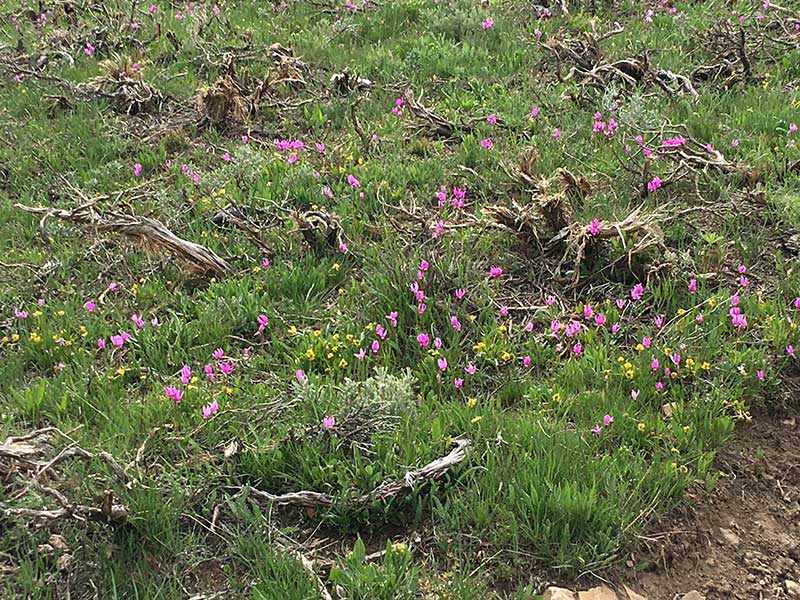Dodecatheon pulchellum / shooting star
- five pink to lavender lobes projecting backwards
- white or yellow petal bases above a squiggly purple ring
- anthers joined into a projecting point; stigma projecting past the point
- snowmelt to early spring
- wet meadows to sagebrush communities
Also known as: few-flower shooting star, American cowslip, mosquito bills, mad violets, sailor caps, sticky shooting star, Cusick’s shooting star, western shooting star, dark-throated shooting star
Synonyms: Primula pauciflora (this is the officially accepted name now)
Dodacatheon pulchellum is just a small plant, often overtopped by pretty much all of its neighbors, but it is never invisible. Indeed, blooming as it does just after snowmelt or in early June, it is often the only bright color in a sea of green.
The pretty flowers of this species have five pink to lavender lobes projecting backwards – which is usually upward. They join at the bases above a squiggly purple ring. Pointing the other direction from the ring is a pencil-like fusion of five purple stamens. A single stigma extends forward through that ring; it is visible in at least one of the gallery photos.
Shooting stars typically have a rosette of basal leaves, somewhat thick with smooth edges (entire margins). The leaves are elongated ovals, thicker at the distal (far) end than at the base. Plants typically go dormant in the summer but may not disappear entirely.
Although D. pulchellum is an herbaceous perennial growing from a very short, erect root stock, and although it has short rhizomes, it propagates mostly by seed.
Besides the weird flowers, another weird thing about this species is the wide range of habitat tolerance. Most reports say it prefers perennially moist to wet soils, and indeed, it seems to be commonly found in marshy wetlands toward the river. On the other hand, the first plants I have found in the spring are in the sagebrush community sand in the middle of a seldom used road.
Interesting bits – The flowers are pollinated by bees which grab hold of the petals, and gather pollen by vibrating the flowers by buzzing their wings (buzz pollination). The vibration releases pollen from the anthers.
| Color | |
|---|---|
| Family | |
| Blossom size | |
| Inflorescence size | |
| Inflorescence type | |
| When? | |
| Where? | fens, moist meadows, wet(ter) meadows, wetlands, with sagebrush |





